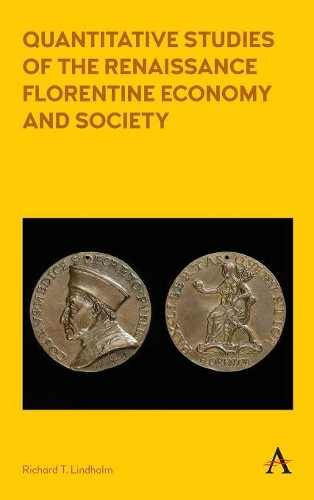
Quantitative Studies of the Renaissance Florentine Economy and Society
(Hardback, First)
Available Formats
Publishing Details
Quantitative Studies of the Renaissance Florentine Economy and Society
By (Author) Richard T. Lindholm
1
Anthem Press
Anthem Press
2nd January 2017
First
United Kingdom
Classifications
Professional and Scholarly
Non Fiction
European history: Renaissance
European history
330.945511
Physical Properties
Hardback
350
Width 153mm, Height 229mm, Spine 26mm
454g
Description
Quantitative Studies of the Renaissance Florentine Economy and Society is a collection of nine quantitative studies probing aspects of Renaissance Florentine economy and society. The collection, organized by topic, source material and analysis methods, discusses risk and return, specifically the population's responses to the plague and also the measurement of interest rates. The work analyzes the population's wealth distribution, the impact of taxes and subsidies on art and architecture, the level of neighborhood segregation and the accumulation of wealth. Additionally, this study assesses the competitiveness of Florentine markets and the level of monopoly power, the nature of women's work and the impact of business risk on the organization of industrial production.
Reviews
Lindholms Quantitative Studies illuminates the underlying dynamics of plague mortality, residential patterns, home ownership, wealth distribution and womens work in the wool industry in Renaissance Florence. Drawing on economic theory and advanced statistical methods, yet attentive to microhistorical contexts, this important book opens up new pathways for future research. Julius Kirshner, Professor Emeritus of Medieval and Renaissance History, University of Chicago, USA
Author Bio
Richard T. Lindholm received a doctorate in history and in economics from the University of Chicago. He taught in the Department of Finance, Lundquist College of Business, University of Oregon.
